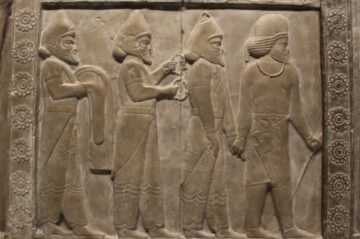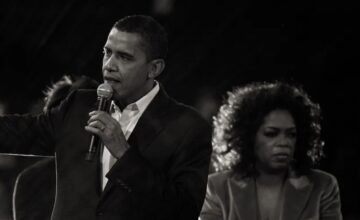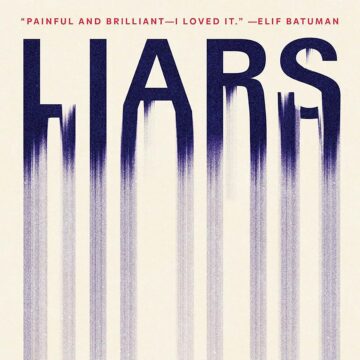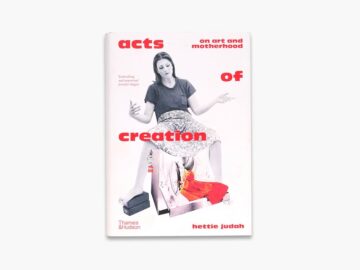David J Linden in Aeon:
Growing up in Los Angeles in the 1970s, I gradually came to realise that my father was not the stereotypical psychoanalyst. Yes, he had an office with enigmatic modern art on the walls, copies of The New Yorker in the waiting room and the requisite analytical couch. It’s true that said couch had a wedge-shaped pillow designed for the client to assume the supine posture so frequently portrayed in the cartoons from those same issues of The New Yorker. And, during psychoanalytic sessions, my father did indeed perch in a black leather Eames chair, notebook in hand. But beyond those trappings, he had the sceptical and logical mind of a physician (in those days, nearly all psychoanalysts were, like my father, MDs).
Starting when I was a small child and continuing until I left for university, my father and I would eat dinner together at one of several local restaurants every Wednesday night. Over matzoh ball soup at Zucky’s Delicatessen, we’d discuss anything and everything, including the progress of his psychoanalytic clients (with names and identifying details omitted of course). It was an odd way to grow up and I loved it. In our Wednesday night case studies, there would be the expected psychodynamic talk of dream interpretation and early childhood experiences, but it was all tempered by what would come to be known as neuroscience. He would say that, when the talking cure worked (as it did for most of his clients), it did so not in the nebulous realm of id, ego and superego, but rather by changing the cellular and molecular structure of the brain.
More here.
Enjoying the content on 3QD? Help keep us going by donating now.


 This buoyant anvil of a book has brought me to the edge of a nervous breakdown. Night after night I’m waking with Seamus Heaney sizzling through—not me, exactly, but the me I was thirty-four years ago when I first read him, in a one-windowed, mold-walled studio in Seattle, when night after night I woke with another current (is it another current?) sizzling through my circuits: ambition. Not ambition to succeed on the world’s terms (though that asserted its own maddening static) but ambition to find forms for the seethe of rage, remembrance, and wild vitality that seemed, unaccountably, like sound inside me, demanding language but prelinguistic, somehow. I felt imprisoned by these vague but stabbing haunt-songs that were, I sensed, my only means of freedom.
This buoyant anvil of a book has brought me to the edge of a nervous breakdown. Night after night I’m waking with Seamus Heaney sizzling through—not me, exactly, but the me I was thirty-four years ago when I first read him, in a one-windowed, mold-walled studio in Seattle, when night after night I woke with another current (is it another current?) sizzling through my circuits: ambition. Not ambition to succeed on the world’s terms (though that asserted its own maddening static) but ambition to find forms for the seethe of rage, remembrance, and wild vitality that seemed, unaccountably, like sound inside me, demanding language but prelinguistic, somehow. I felt imprisoned by these vague but stabbing haunt-songs that were, I sensed, my only means of freedom. One Sumerian epic poem called Enmerkar and the Lord of Aratta gives the first known story about the invention of writing, by a king who has to send so many messages that his messenger can’t remember them all.
One Sumerian epic poem called Enmerkar and the Lord of Aratta gives the first known story about the invention of writing, by a king who has to send so many messages that his messenger can’t remember them all. Today, researchers are looking toward building quantum computers and ways to securely transfer information using an entirely new sister field called
Today, researchers are looking toward building quantum computers and ways to securely transfer information using an entirely new sister field called  I first came to the United States for an academic exchange at Columbia University in 2005, and have spent the bulk of my time here since starting my PhD at Harvard University in 2007. No country changes nature overnight, and America still retains many of the virtues with which I fell in love all those years ago. But there are days when I fear that the place has been transformed so deeply that the qualities that would once have been touted as quintessentially American have forever been lost.
I first came to the United States for an academic exchange at Columbia University in 2005, and have spent the bulk of my time here since starting my PhD at Harvard University in 2007. No country changes nature overnight, and America still retains many of the virtues with which I fell in love all those years ago. But there are days when I fear that the place has been transformed so deeply that the qualities that would once have been touted as quintessentially American have forever been lost. SHORTLY AFTER Alice Munro died, a line from the title story of her 2009 collection Too Much Happiness began circulating on the internet: “Always remember that when a man goes out of the room, he leaves everything in it behind […] When a woman goes out she carries everything that happened in the room along with her.” The quote appeared in white font over a black background. The only attribution was to Munro, so at the time, I assumed it was something she had said in an interview. It felt piercingly ironic that the female winner of the 2013 Nobel Prize in Literature was being remembered for a remark she made about women’s supposed inability to live outside the context of men. Then, I learned the line was delivered by a character in “Too Much Happiness,” Munro’s fictional account of a real 19th-century woman, Sofya Kovalevskaya. Shortly afterward, the world learned of the sexual abuse Munro’s youngest daughter, Andrea Skinner, experienced as a child from her stepfather, Munro’s second husband. An abuse that Munro herself had learned of decades ago and chose to ignore.
SHORTLY AFTER Alice Munro died, a line from the title story of her 2009 collection Too Much Happiness began circulating on the internet: “Always remember that when a man goes out of the room, he leaves everything in it behind […] When a woman goes out she carries everything that happened in the room along with her.” The quote appeared in white font over a black background. The only attribution was to Munro, so at the time, I assumed it was something she had said in an interview. It felt piercingly ironic that the female winner of the 2013 Nobel Prize in Literature was being remembered for a remark she made about women’s supposed inability to live outside the context of men. Then, I learned the line was delivered by a character in “Too Much Happiness,” Munro’s fictional account of a real 19th-century woman, Sofya Kovalevskaya. Shortly afterward, the world learned of the sexual abuse Munro’s youngest daughter, Andrea Skinner, experienced as a child from her stepfather, Munro’s second husband. An abuse that Munro herself had learned of decades ago and chose to ignore. The medals keep coming for US swimmers at the
The medals keep coming for US swimmers at the  This remarkable book begins dramatically and truthfully: ‘A monstrous child is blocking my view and has carved a nest in the soft darkness of my head. It eats the hours, this child, leaving me only crumbs.’ Motherhood can be overwhelming, however longed for. It is never a small thing, even if the rest of the world chooses to ignore it or view it as a block to professionalism. Cyril Connolly’s remark in Enemies of Promise (1938), ‘There is no more sombre enemy of good art than the pram in the hall’, was, of course, a reference to male creativity. But women have routinely been brainwashed into concurring with this dismissive observation – made, admittedly, before Connolly had children. In the 1950s, respected male tutors in colleges of art would dismiss female making as ‘frustrated maternity’. The sculptor Reg Butler asked Slade School of Fine Art students in 1962, ‘Can a woman become a vital creative artist without ceasing to be a woman except for the purposes of a census?’
This remarkable book begins dramatically and truthfully: ‘A monstrous child is blocking my view and has carved a nest in the soft darkness of my head. It eats the hours, this child, leaving me only crumbs.’ Motherhood can be overwhelming, however longed for. It is never a small thing, even if the rest of the world chooses to ignore it or view it as a block to professionalism. Cyril Connolly’s remark in Enemies of Promise (1938), ‘There is no more sombre enemy of good art than the pram in the hall’, was, of course, a reference to male creativity. But women have routinely been brainwashed into concurring with this dismissive observation – made, admittedly, before Connolly had children. In the 1950s, respected male tutors in colleges of art would dismiss female making as ‘frustrated maternity’. The sculptor Reg Butler asked Slade School of Fine Art students in 1962, ‘Can a woman become a vital creative artist without ceasing to be a woman except for the purposes of a census?’ Fifty years ago, a young woman was kidnapped by the Symbionese Liberation Army, a ragtag group of revolutionaries willing to kill for gentle causes. For weeks, she recorded strident, sarcastic messages at her captors’ bidding, messages that bewildered and disturbed their intended audience. In time, she was taught the group’s thinking, given a nom de guerre (Tania), and handed a sawed-off carbine. She waved it around to help the SLA rob a bank—and later sprayed bullets from a machine gun to help them escape arrest. Of her own volition, she hid out with them for nearly a year. Public response swung from warm concern to fury.
Fifty years ago, a young woman was kidnapped by the Symbionese Liberation Army, a ragtag group of revolutionaries willing to kill for gentle causes. For weeks, she recorded strident, sarcastic messages at her captors’ bidding, messages that bewildered and disturbed their intended audience. In time, she was taught the group’s thinking, given a nom de guerre (Tania), and handed a sawed-off carbine. She waved it around to help the SLA rob a bank—and later sprayed bullets from a machine gun to help them escape arrest. Of her own volition, she hid out with them for nearly a year. Public response swung from warm concern to fury. A backup of life on Earth could be kept safe in a permanently dark location on the moon, without the need for power or maintenance, allowing us to potentially restore organisms if they die out.
A backup of life on Earth could be kept safe in a permanently dark location on the moon, without the need for power or maintenance, allowing us to potentially restore organisms if they die out. Traditionally, Donald Trump has been
Traditionally, Donald Trump has been